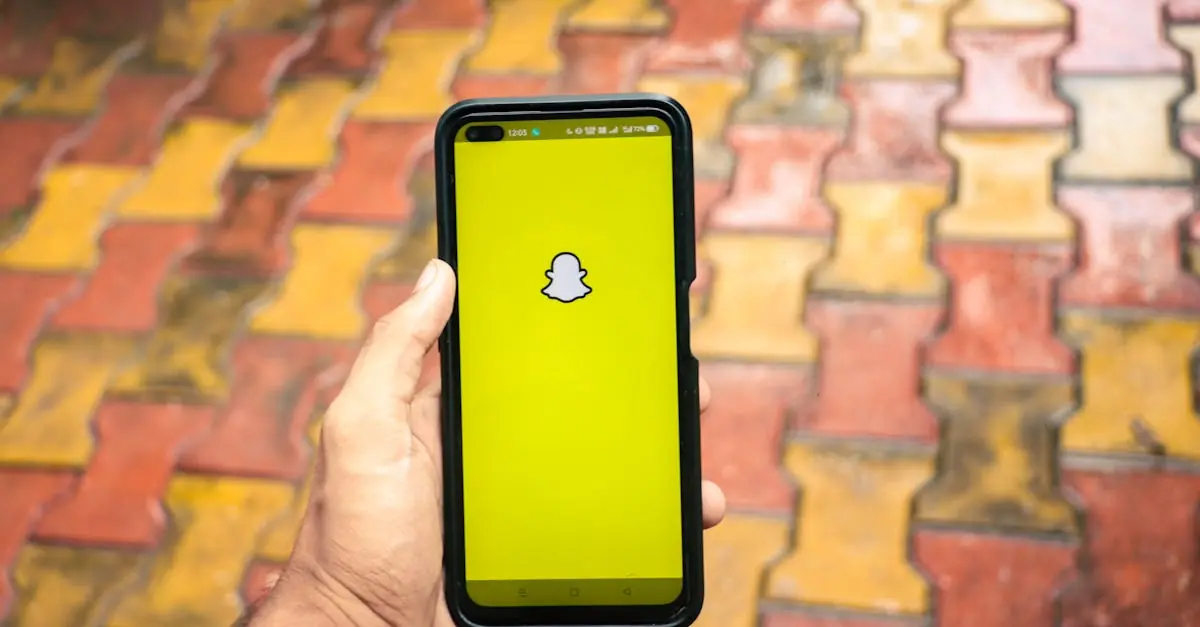In a world where cat videos reign supreme, crafting a viral social media campaign can feel like trying to catch lightning in a bottle. Yet, when done right, these campaigns can catapult brands into the stratosphere of internet fame, turning ordinary products into must-have sensations. Imagine your brand’s message spreading faster than a rumor at a family reunion—now that’s the power of going viral!
From clever hashtags to unforgettable visuals, the secret sauce behind a successful campaign often lies in its ability to connect with audiences on a personal level. It’s not just about likes and shares; it’s about creating a buzz that gets people talking, laughing, and hitting that share button like it’s a piñata. Buckle up as we dive into the wild world of viral campaigns that left a mark and how you can harness their magic for your brand.
Table of Contents
ToggleOverview of Viral Social Media Campaigns
Viral social media campaigns capture widespread attention through creative content that resonates with users. These campaigns leverage emotions, humor, or surprise to engage audiences effectively. Brands often incorporate trending topics or cultural phenomena into their campaigns, maximizing relevance and shareability.
Memorable visuals play a crucial role in these campaigns. High-quality images or videos grab attention quickly. A clever hashtag can also encourage sharing while creating community around the content. Many successful campaigns invite user-generated content, motivating followers to participate actively.
Engagement metrics reflect the success of viral campaigns. Countless shares, comments, and likes indicate popularity, but lasting impact stems from brand loyalty and awareness. Campaigns that connect emotionally tend to foster a deeper relationship with audiences. Notable examples, such as the Ice Bucket Challenge or Old Spice’s “The Man Your Man Could Smell Like,” showcase the effectiveness of playful content and strong branding.
Elements of surprise often make campaigns go viral. Unexpected twists or relatable scenarios can encourage viewers to spread the message. Engaging storytelling allows brands to stand out in saturated social media environments.
Analyzing these campaigns can offer valuable insights. Marketers gain knowledge on what resonates with their audience and how to craft shareable content. Strategies that prioritize emotional appeal, visual impact, and community involvement can lead to successful viral campaigns for any brand.
Key Elements of Successful Campaigns
Successful viral social media campaigns center on a few key elements that drive engagement and shareability.
Compelling Content
Compelling content captures attention quickly. It taps into emotions like joy, surprise, or even outrage, creating a connection with the audience. Engaging visuals enhance this connection and provide context. Humor often plays a critical role, making content more relatable and shareable. Viral campaigns use strong narratives to tell stories that resonate with users. Memorable hashtags enhance recall, making it easier for audiences to share with their networks. Content that feels authentic frequently performs better than polished advertisements. Ultimately, mixing creativity with emotional appeal leads to the most impactful campaigns.
Audience Engagement
Audience engagement forms the backbone of successful viral campaigns. Active participation boosts emotional investment, creating a sense of community among followers. Inviting user-generated content encourages individuals to share their experiences related to the brand. Campaigns that ask questions or initiate challenges often sustain this interaction over time. Personalized responses from brands also heighten this engagement, making audiences feel valued. Social media platforms facilitate direct interaction, allowing brands to connect on a deeper level. By prioritizing audience involvement, brands cultivate loyalty and increase the likelihood of shares and engagement.
Notable Examples of Viral Campaigns
Several viral campaigns have captured attention and showcased effective strategies. Their ability to engage users demonstrates the potential impact social media can have on brands.
Campaign Case Study 1
The Ice Bucket Challenge became a global sensation in 2014. Participants poured ice water over themselves to raise awareness for ALS. The combination of humor, challenge, and community involvement drove engagement, leading to over 17 million participants and $115 million raised for ALS research. User-generated content created a sense of shared purpose. Hashtags like #IceBucketChallenge contributed to widespread visibility and encouraged users to challenge friends. This campaign illustrates how emotional connections can lead to substantial donations and increased awareness.
Campaign Case Study 2
Old Spice’s “The Man Your Man Could Smell Like” launched in 2010 and quickly gained traction. Featuring the charismatic Isaiah Mustafa, the campaign used witty humor and clever storytelling. The iconic commercials went viral, amassing millions of views. Interactive elements, such as personalized video responses, invited user participation. Over 1.4 million Twitter followers and a surge in sales defined its success. This campaign emphasizes the value of humor and strong branding in creating memorable content that resonates with audiences.
Measuring the Impact of Viral Campaigns
Measuring the impact of viral campaigns involves analyzing key performance indicators. Engagement metrics reveal how effectively the content resonates with audiences. Shares, likes, and comments provide immediate feedback on popularity. Metrics such as reach and impressions quantify visibility, while advanced analytics tools can track demographic insights. Brands often use conversion rates to assess the effect on their sales. Customer sentiment analysis gauges public perception, helping to refine future campaigns. Tools like Google Analytics and social media insights offer valuable data throughout the campaign lifecycle.
Metrics and Analytics
Metrics play a crucial role in evaluating viral campaign success. Quantifying engagement with likes and shares offers insight into audience reactions. Analyzing click-through rates indicates how well content drives traffic to websites. Social media platforms provide built-in analytics tools, allowing brands to track performance in real time. Additionally, heatmaps can illustrate where users spend their time on a page. This granular understanding shapes future content strategies. Implementing A/B testing helps determine which messaging or visuals perform best. Continual monitoring ensures brands adapt quickly to audience preferences.
Long-Term Effects
Long-term effects of viral campaigns extend beyond immediate metrics. Sustained brand awareness often results from engaging content that resonates with communities. Brands notice increased loyalty as followers feel connected to the campaign’s message. Retention rates provide insight into how effectively campaigns translate into repeat customers. Effective campaigns can also lead to organic growth, as satisfied customers advocate for the brand. Evaluating ongoing engagement through surveys and feedback can further enhance strategies. Building a strong narrative fosters lasting relationships with the audience, enhancing brand reputation. Tracking these long-term effects allows brands to refine their approach and foster a loyal customer base.
Challenges in Creating Viral Campaigns
Creating viral social media campaigns presents various challenges that brands must navigate carefully. One significant obstacle involves understanding the target audience. Knowing their preferences, interests, and behaviors is essential to craft content that resonates. Many brands also struggle with maintaining originality; standing out amidst saturating competition demands creativity and uniqueness.
Budget constraints can hinder the production of high-quality content. Limited resources might prevent brands from leveraging top talent or tools, impacting overall effectiveness. Additionally, platforms frequently change algorithms, making it difficult to anticipate which content maximizes visibility and engagement. Brands that adapt quickly often find greater success in the ever-evolving landscape.
Another challenge lies in measuring true virality. Engagement metrics, such as likes and shares, provide initial insight but fail to capture long-term brand loyalty and awareness. Relying solely on numbers can lead to misguided strategies that overlook deeper connections with audiences. Realizing that emotional engagement fosters lasting relationships is crucial for effective campaigns.
Furthermore, executing a suitable distribution strategy complicates matters. Brands must strategically select platforms, ensuring their content aligns with audience behaviors and preferences. Tight integration across different channels is vital for maximizing reach. Campaigns that ignore this aspect may fail to achieve their intended viral status.
Addressing issues surrounding negative feedback is also necessary. Each campaign may not resonate with every audience segment, and misinterpretations can arise. Brands must prepare for criticism while maintaining transparency and responsiveness. This approach helps mitigate potential damage while reinforcing community trust.
The challenges inherent in creating viral campaigns require brands to prioritize audience insights, creative originality, and adaptable strategies.
Viral social media campaigns hold immense potential for brands willing to embrace creativity and authenticity. By focusing on emotional connections and engaging visuals, brands can foster a sense of community that drives loyalty and encourages sharing. The success of iconic campaigns demonstrates that humor and relatable content resonate deeply with audiences.
As brands navigate the complexities of social media, leveraging analytics and audience insights will be crucial in refining strategies. Understanding the nuances of engagement metrics and customer sentiment can enhance future efforts. Ultimately, the journey toward virality is not just about fleeting attention but about building lasting relationships that elevate brand presence in a crowded marketplace.



